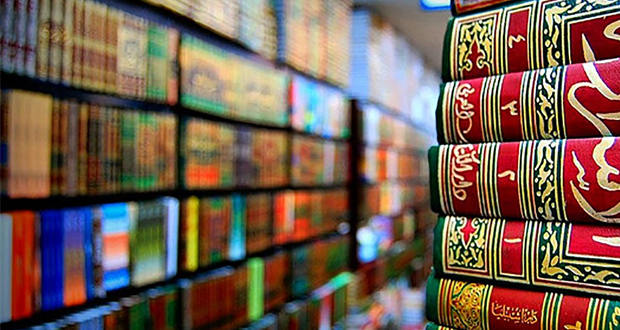The West is well known for its hypocrisy which is seen in many spheres of activity, not the least in their attitude towards animal rights. It is often quick to condemn the Islamic method of slaughtering animals for food as ‘barbaric’, notwithstanding the fact that the Islamic method of slaughter known as dhabh is quick and painless, besides purifying the meat of impurities. Contrast this with the various methods of torture inflicted on animals to satisfy the palates of gourmands and gluttons that prevails in the West to this day. A classical case of this we see in a French ‘delicacy’ commonly known as Foei Gras where the torture of birds to produce it has been institutionalized in French law.
Foie gras ( French for “fat liver”) is a food product made of the liver of a duck or goose that has been specially fattened for the purpose. This fattening is achieved through gavage (force-feeding) corn, according to French law, though outside of France it is occasionally produced using natural feeding. Foie gras is a popular and well-known delicacy in French cuisine. French law goes so far as to state that that “Foie gras belongs to the protected cultural and gastronomical heritage of France”.
Jewish origin
What is also interesting is that Foie Gras has Jewish antecedents. The Judaic dietary law, Kashrut, forbade lard as a cooking medium, and butter, too, was proscribed as an alternative since Kashrut also prohibited mixing meat and dairy products. Jewish cuisine used olive oil in the Mediterranean, and sesame oil in Babylonia, but neither cooking medium was easily available in Western and Central Europe, and so poultry fat (known in Yiddish as schmaltz), which could be abundantly produced by overfeeding geese, was substituted in their stead. The delicate taste of the goose’s liver was soon appreciated; Hans Wilhelm Kirchhof of Kassel wrote in 1562 that the Jews raise fat geese and particularly love their livers. Gentile (non-Jewish) gastronomes soon came to appreciate fattened goose liver, which they could buy in the local Jewish ghetto of their cities. In 1570, Bartolomeo Scappi, chef de cuisine to Pope Pius V, published his cookbook Opera, wherein he describes that “the liver of [a] domestic goose raised by the Jews is of extreme size and weighs [between] two and three pounds.” In 1581, Marx Rumpolt of Mainz, chef to several German nobles, published the massive cookbook Ein New Kochbuch, describing that the Jews of Bohemia produced livers weighing more than three pounds; he lists recipes for it—including one for goose liver mousse. János Keszei, chef to the court of Michael Apafi, the prince of Transylvania, included foie gras recipes in his 1680 cookbook A New Book About Cooking, instructing cooks to “envelop the goose liver in a calf’s thin skin, bake it and prepare [a] green or [a] brown sauce to accompany it. I used goose liver fattened by Bohemian Jews, its weight was more than three pounds. You may also prepare a mush of it.”
Can foie gras be halal ?
What is most disconcerting however is that some Muslims in France have begun to cultivate a taste for this item of food to prove that they are as French as the French. A recent news report states that Halal Foie Gras is catching on in France:
Is any culinary delicacy so inimitably French as the taste of pate de foie gras? Snails and frogs are for the more discerning French palate but foie gras, particularly during the festive season, is universally popular. From Carcassonne to Calais, foie gras – made traditionally from goose livers, but more often now from duck livers – is an essential part of the Christmas feast in France and it appears many of the country’s six million Muslims have acquired the taste too.
Sales of halal foie gras have increased ten-fold in the last two years, delighting supermarket chains across France. “It is one of our bestsellers, we were selling more than 30 a day” said the manager of a Parisian branch of Carrefour, while a spokesman for a leading meat wholesalers announced that demand for halal duck and halal capon has been “unprecedented” in 2009. According to Antoine Sfeir, the Lebanese-born founder of the newspaper, Cahiers de l’Orient, the reason behind the boom in halal French delicacies is easy to explain: “First generation Muslims were traditionalists while the second generation were too busy working,” he says. “They just didn’t have the means, with seven or eight kids, to buy foie gras”. But, says Sfeir, the current generation of French Muslims “feel they should make more of an effort to integrate.”
Halal foie gras isn’t cheap. It costs more than standard foie gras – about 15 euros – but that’s because each tin has to receive a certificate of authentication from a mosque, stating that the meat conforms to halal practices.
But can Foie Gras really be Halal when we know that this dish not only originated with the Jews to sidestep the rigid dietary regulations of their law, but also comes from force-feeding and inflicting unnecessary torture on these poor creatures to make them develop Fatty liver disease.
Let’s us consider the source of this ‘wonderful dish’.
Foie Gras
Force feeding the geese
The metal pipe being passed through the throat to the stomach to make the liver bigger and fatter

The cages are so small that they force the geese to stay in one position to avoid using energy, thus converting all food into fat.
A close up view of the crammed up conditions of the birds
The legs of the geese are bloated from long standing everyday.
Being force fed continuously despite the sickly look of their faces and bodies
The creatures are forced to eat until they are dead or their bodies cannot take it anymore
Those that survive these terrible conditions end up like this. Diseased with bloated legs, no sleep and no exercise or free movement of any kind. So diseased indeed that they pass out blood with their excreta
The final product from all this suffering- Foie Gras or fattened geese liver- a French delicacy and an essential part of a traditional Christmas Feast in France
Post Disclaimer | Support Us
Support Us
The sailanmuslim.com web site entirely supported by individual donors and well wishers. If you regularly visit this site and wish to show your appreciation, or if you wish to see further development of sailanmuslim.com, please donate us
IMPORTANT : All content hosted on sailanmuslim.com is solely for non-commercial purposes and with the permission of original copyright holders. Any other use of the hosted content, such as for financial gain, requires express approval from the copyright owners.
 Sri lanka Muslims Web Portal Sri Lanka Muslims News Center
Sri lanka Muslims Web Portal Sri Lanka Muslims News Center









 Donate
Donate


